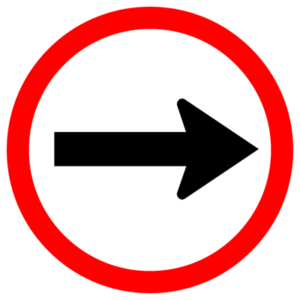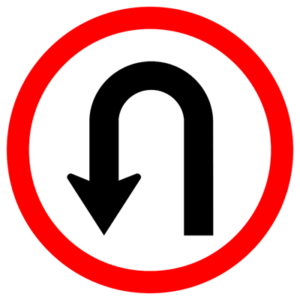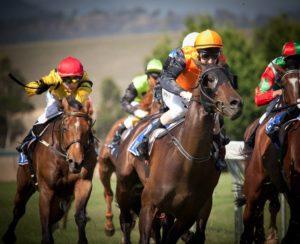 The more that you get into the world of betting, the more that you’ll being to notice certain bet types that stray from the more traditional, straightforward options. The likes of handicap bets are a good example of this, with Forecast, Reverse Forecast and Tricast betting being another thing to look out for. They are, to some extent, variations on the same theme and are used most commonly in horse racing betting.
The more that you get into the world of betting, the more that you’ll being to notice certain bet types that stray from the more traditional, straightforward options. The likes of handicap bets are a good example of this, with Forecast, Reverse Forecast and Tricast betting being another thing to look out for. They are, to some extent, variations on the same theme and are used most commonly in horse racing betting.
A Forecast wager is one in which you choose a number of selections that you think will finish in a specific order. A Reverse Forecast, meanwhile, might sound like you’re expecting your selections to finish the opposite way around by in actuality gives you the flexibility to see them finish in any order. A Tricast bet is one in which you choose three options and say the order that they’ll finish an event in.
Forecasts and Tricasts Explained
While horse racing is the obvious sport to consider when discussing Forecast, Reverse Forecast and Tricast betting, you can actually use the betting method on a number of different sports. Effectively any event that has a finishing order.
Here’s how each bet works:
Straight Forecast
 Simply put, a Forecast is a bet in which you pick two selections that you like and say the order in which they’ll finish. Let’s use horse racing as the example because it’s the simplest.
Simply put, a Forecast is a bet in which you pick two selections that you like and say the order in which they’ll finish. Let’s use horse racing as the example because it’s the simplest.
You might be looking at a horse race that features ten different horses and you’ve decided to place a Forecast bet on it. In this instance, you select your two horses and say the order that you think they will finish the race in, such as:
- Horse 3 to finish first
- Horse 1 to finish second
In order for your wager to be a winning one, the race must finish with the horses in exactly that order in the top two spots. If they finish with Horse 1 in first place and Horse 3 in second then your bet will be a losing one. It is common for bookmakers to only offer Forecasts in races that contain more than three competitors and the odds used for your payout are typically the Starting Price for each horse.
The above is known as a Straight Forecast, though it’s usually simply referred to as a Forecast. Placing such a bet is easy enough, with most bookies having a ‘Forecast’ column next to the prices of the horses. Your job is to chose ‘1st’ next to the horse you think will win the race and ‘2nd’ next to the one that you will finish as the runner up. Some bookmakers use different methods, of course, but they’re usually self-explanatory.
Reverse Forecast
 The title of this type of bet is slightly misleading, simply because you’d expect it to mean that the horses finish in the reverse order to the one that you’ve predicted. In actually fact, what you’re doing here is choosing the two horses that you think will finish the race in the top two places but you’re not specifying the exact order that you’ll think they’ll come home in. Instead, they can finish either way around and your bet will be a winner.
The title of this type of bet is slightly misleading, simply because you’d expect it to mean that the horses finish in the reverse order to the one that you’ve predicted. In actually fact, what you’re doing here is choosing the two horses that you think will finish the race in the top two places but you’re not specifying the exact order that you’ll think they’ll come home in. Instead, they can finish either way around and your bet will be a winner.
To use our example from above, you’ve selected Horse 1 and Horse 3 in the race that you’re watching, opting for a Reverse Forecast because you can’t be certain which way around the horses will finish the race. You’ve got a sneaking suspicion that Horse 3 will win the race, but Horse 1 beat him last time out so you don’t want to take the risk of a Straight Forecast, opting for the Reverse Forecast instead. Either of these results will be winners:
- Horse 1 to finish first
- Horse 3 to finish second
Or
- Horse 3 to finish first
- Horse 1 to finish second
The key thing to remember about a Reverse Forecast is that it’s twice as expensive as a Straight Forecast. This is because you’re essentially placing two different Straight Forecasts: one in which you think Horse 1 will win and Horse 3 will come second and another where Horse 3 wins and Horse 1 comes in second place. It’s just easier and more convenient than placing those two bets separately.
Combination Forecast
If you want to bet on the first and second finishing order but you have 3 horses that you think could finsih in the top two then you can create your own combination forecast.
Let’s say you want to back horse 1, horse 3 and horse 8 you could place 6 separate bets to create all combinations: 1/3, 1/8, 3/1, 3/8, 8/1, 8/3.
If you had four horses in this combination it would be 12 bets, five horses would be 20 bets, and so on.
Tricast

Finally we look at a Tricast bet. This is where you pick three horses and you predict the order that they’ll come in in the first three places. Let’s say that you like the look of Horse 2, Horse 5 and Horse 7 in a race, figuring that the three of them will take the first three spots.
Horse 2 is the runaway favourite in the event, so it’s easy to figure out that they’ll come first. The other two you think will come second and third based on form, so you bet looks like this:
- Horse 2 to finish first
- Horse 7 to finish second
- Horse 5 to finish third
If the three horses that you’ve chosen finish the race in this exact order then you’ll win your bet. It’s a good wager to opt for in races where this is one horse that is such a favourite to win that their odds are awful and there’s no value in betting on them, but you think you know which horses will fill up the places behind them in the event. Your odds will be lengthened, making it a bet with much more acceptable value.
Reverse Tricast
The reverse tricast bet does not exist technically but you can place one yourself by placing a combination tricast. Taking the example from above you can cover three horses to finish in any order in the top three by placing 6 separate bets: 2/7/5, 2/5/7, 7/2/5, 7/5/2, 5/2/7, 5/7/2.
You could add selections into this, for example, if you pick four horses across the top three positions it would be 24 bets, 5 horses would be 60 bets and so on.
What Sports Can You Place These Bets On?
 Horse racing is easily the most common sport for punters to place Forecast, Reverse Forecast and Tricast bets on, with greyhound racing next in line. After those two, you’re looking at pretty much any sport in which there’s a finishing order, such as golf tournaments, say, or sprinting events. As long as you can predict the order that competitors will finish in, you can usually place such a bet on the event.
Horse racing is easily the most common sport for punters to place Forecast, Reverse Forecast and Tricast bets on, with greyhound racing next in line. After those two, you’re looking at pretty much any sport in which there’s a finishing order, such as golf tournaments, say, or sprinting events. As long as you can predict the order that competitors will finish in, you can usually place such a bet on the event.
One thing to think about is which of the options to go for. Though Tricast wagers will clearly have the longest odds, given the need to predict the top three finishes and the order they’ll come in, if there’s nothing that gives you an indication of how that bet will become a winning one then you’re making it less likely that you’ll be able to win the wager. The same is true for Forecast bets, which also offer long odds.
On the flip side of that, Reverse Forecast bets enhance the chances of you winning your wager but do so at the cost of longer odds and by doubling the price of your bet. If there’s an outright favourite for a race then you might find more value in placing two Straight Forecast bets with the other two horses in the two different positions than in placing a Reverse Forecast. It’s all personal choice, but make sure to give it some thought.
